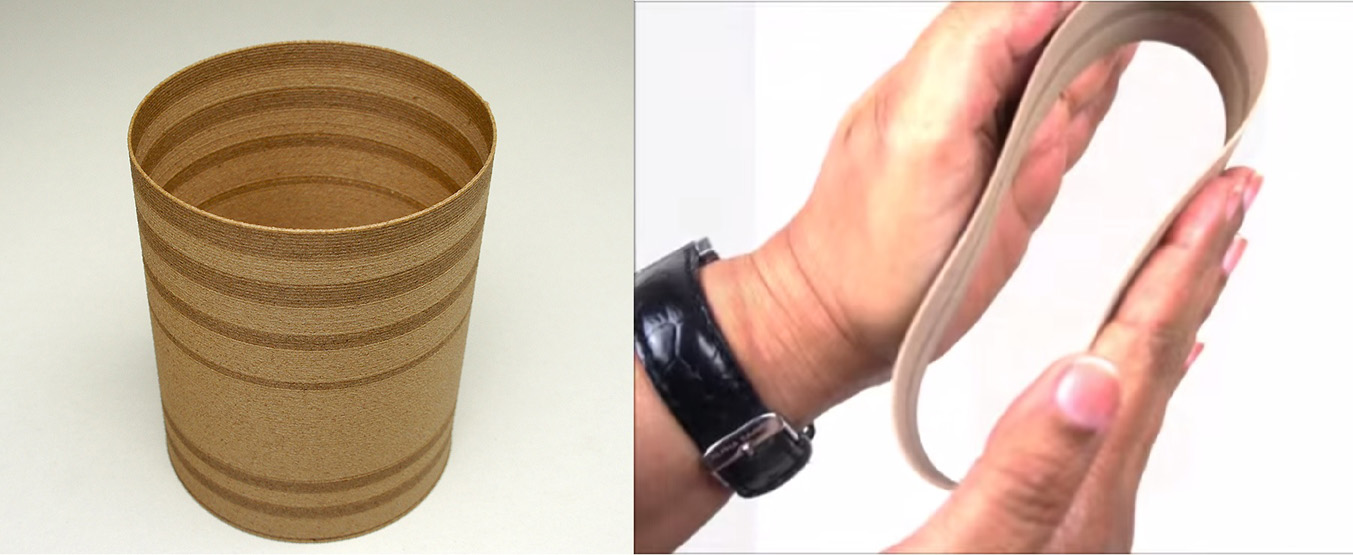It’s almost been three years since Kai Parthy, a German inventor with quite a story, brought wood and plastic together as filament. Released in September, 2012, his Laywoo-D3 was the first filament of its kind, combining one of the oldest manufacturing materials, natural wood, with one of the newest, thermoplastics. His filament, a mix of recycled wood fibers and polymer binder, not only gave makers the ability to print wood-like objects with textures but also with the added effect of ‘tree-rings’ – alternating bands of brown hues. This effect could be achieved by simply adjusting the temperature of extrusion to achieve darker and lighter bands and the filament, in general, could be used just like ABS or PLA. No extra processing or preparation or tools required, and wood, as a material, was back for an encore.
A whole new world of filaments, beyond ABS and PLA, opened up and since then we’ve had LayBrick (sandstone-like filament), BendLay (transparent bendable filament), LayCeramic (clay-like filament that could be sintered and glazed), Poro-Lay (felt, foam and fiber like filaments filled with pores), MoldLay (wax-like filament that can be used for casting), Di-Electro-Lay (filament for electronic shielding) and Lay-a-PVA (a water soluble filament for support structures), all thanks to Kai. Composite filaments have since left pure ABS or PLA ones in the dust, with metal composites (bronze, copper, iron, stainless steel, and many more) rapidly gaining popularity in FDM printing.
To think, all these composite filaments were born from one man’s experiments in trying to eliminate warping in 3D printing. He has never stopped fiddling around with these materials and his creative streak led him to invent an astonishingly wide-range of devices and processes that you can gape at here.
His latest fiddling has given the added property of flexibility to his wood filament, Laywoo-D3. Laywood -Flex brings the bendability of tree branches to 3D printable filament, without being rubber-like.
Laywood prints are otherwise quite rigid with high tensile strength and tend to break faster, but Laywood-Flex has a higher elasticity with slightly lower tensile strength. As Kai points out, “More than 2 years has gone and some more filaments have been developed in my garage and I wanted to come back to LAYWOOD (TM) again, making it better or more flexible as some sorts of wood in real nature are also bendable. So I added some flexibilizers and got a proper result which is in sum a thermoplastic polymer-composite, made from harmless ingredients.”
His Laywood-Flex has the following features:
- the warp effect is minimal and tends to zero
- rough or smoother surface adjustable by flow
- printable tree-rings (190 to 255°C) depending on print-speed
- bright: 190 up to 225, darker starting at 225 to 250, faster speed > higher temp necess.
- stick well on ABS-paint at cold plattform or blue tape
- 50°C plattform and you may print directly on capton-tape
- contains ~ 35 % recycled wood, harmless binders made by co-polyesters
- nozzle: 0.5 mm
- 2.85 / 1.75 mm filament
- pricing is the same as for LAYWOO-D3 (rigid)
The flexibility of the filament is also variable, and as Kai has shown, the elasticity of printed objects increases if you print in darker layers at a higher temperature.
You can order the new Laywood-Flex filament directly from Kai’s website or from your local dealer for Lay-filaments. Rest assured, this isn’t the last time we’ll hear of tweaked filaments with unusual properties or looks and as Kai rightly says about his Laywood experiments – the show must go on!




